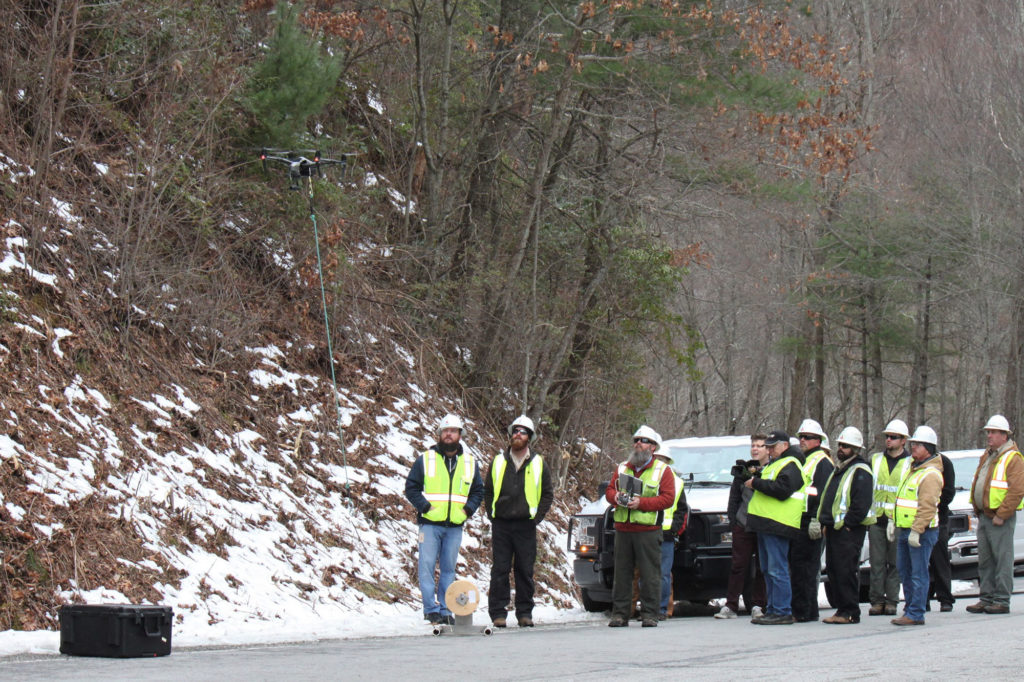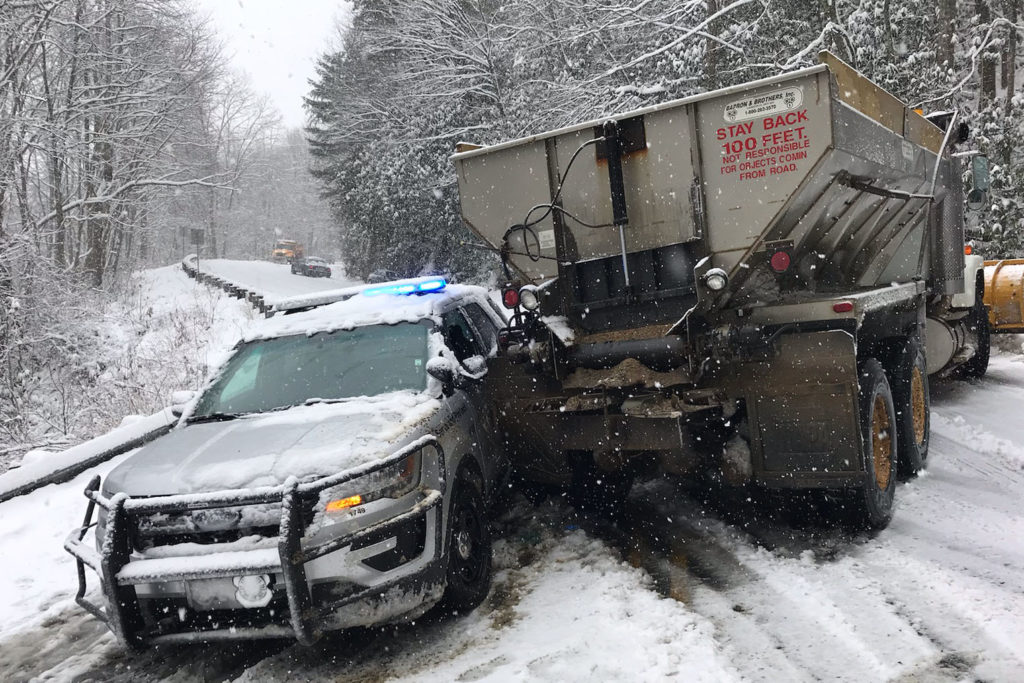
Lamar Paris is no stranger to winter’s treachery on the roads that wind through the mountains of North Georgia.
He’s been elected sole commissioner of Union County for the past 18 years, and among his unofficial duties have been frequent hazardous drives up nearby Blood Mountain to report, via his Facebook page, on road conditions through the highly traveled Neels Gap.
“This is our main transportation artery out of Union County for 80% of all critical medical needs,” said Paris. “Anytime there was a bad snow or ice storm, I’d physically drive up the mountain to check the road conditions. I’ve done it for several years, often in the middle of the night. It’s dangerous for me [but] I felt it was something I always needed to do. I couldn’t ask anybody else to do it, so I’d do it myself.”
Now, thanks to broadband internet access installed by Blue Ridge Mountain EMC and the time-saving work of an intrepid drone, the need for Paris’s pre-dawn ascents has disappeared.
“It’s almost like a dream for me,” he said.
The Georgia Department of Transportation installed a weather station with cameras on the mountaintop with internet connection through a distant cell tower. But when winter storms blew in—the most critical time to obtain weather data—the signal would frequently drop.
“It was a nice amount of equipment, but we didn’t have a way to access it on a regular basis,” said Paris. “That’s why I went to see Jeremy Nelms.”
Nelms is the CEO of Blue Ridge Mountain EMC, which has offered fiber-to-the-home broadband to its members for more than 10 years. After hearing Paris’s weather-station concerns, Nelms offered to help connect the system to the co-op’s fiber network.
“This link is necessary so the local government has connectivity to a weather station and cameras atop the mountain,” said Nelms. “Understanding winter weather conditions is critically important, because this passage is a main thoroughfare for citizens of Union County and its surrounding counties who travel south to get to work and to health care facilities in the Gainesville and north Atlanta areas.
“The benefits of the project will show themselves during the first good snow, when people know they can or cannot go over that mountain. It could save lives.”
The co-op in late 2018 planned to extend 7,000 feet of fiber cable up the mountain. But the path to the top included a deep gorge and 100-foot-tall pine trees.
Keeping the project on track and getting it finished before winter required an unconventional solution: drones.
“Drone technology is starting to become a game-changer in the utility industry,” Nelms said. “From supporting line construction efforts to system inspection and storm restoration assistance, drones are just another arrow in the quiver of the utility worker of the future.”
The co-op based in Young Harris, Georgia, partnered with Southern Company Services to fly a drone from ridge top to ridge top carrying a pull line that would later be attached to fiber cable. Co-op crews climbed steep embankments to follow the drone, which used a mechanical release to drop the pull line and sometimes even flew low enough for the crew to grab it.
“Without the drone, we would have been looking at weeks and not hours to complete this effort,” Nelms said.
Improving Public Safety
The co-op connected the weather station on Dec. 13, 2018, after getting a permit from the Georgia DOT and approval from the U.S. Forest Service.
With fiber service to the weather station, data and pictures will soon be able to be livestreamed during extreme weather conditions. Eventually, the goal is for any would-be mountain driver with an internet connection to be able to access the information as well.
It could even help some of the 2,000 hikers that transit the area every year. The weather station is adjacent to the popular Walasi-Yi Interpretive Center, the only man-made structure that the 2,175-mile Appalachian Trail passes through.
“This fiber line will be incredible for the safety of this area,” said Paris. “Sometimes hikers don’t realize how tough it can be, or they can get caught in a snowstorm.”
A reliable connection will be invaluable for mountain rescues, when timely communication by voice or data is critical, Paris added.
“Having this quality signal will help emergency personnel get data to doctors before they even leave the scene.”

‘A Historical Project’
Blue Ridge Mountain EMC first offered internet access in its remote mountain territory way back in 2002. It began its fiber rollout in 2006.
“Members were asking for it,” said Daniel Frizzell, the co-op’s director of engineering. “In our area, there is no opportunity for rail or air or interstate—it doesn’t exist up here. We had to find a way to jump-start growth, meet the [broadband] demands for education, medical and industry.”
Now the co-op has 1,100 miles of fiber across its system bringing broadband to more than 7,800 members in the counties of Fannin, Union and Towns in Georgia and Cherokee and Clay in North Carolina.
“When you are in a rural area like we are here, it is of critical importance to minimize any barrier to companies being successful,” said Erik Brinke, the co-op’s director of administrative service and external relations. “It makes a difference if we are able to mitigate one biggie—internet connectivity.”
For Paris, the co-op’s commitment means he can rest a little easier knowing his constituents have timely information about icy mountain road conditions.
“I can’t tell you how much we appreciate the EMC taking interest in the project,” he said. “It is not mundane. It’s a historical project for this area.”
Cathy Cash is a staff writer at NRECA.